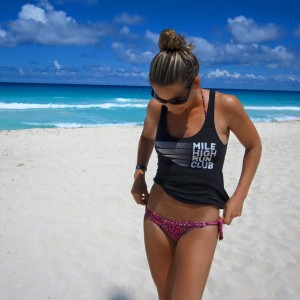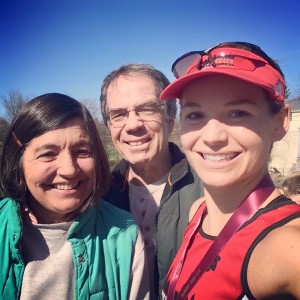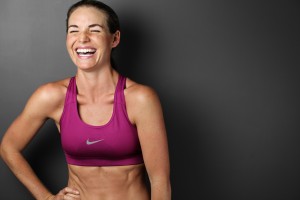If you frequent my blog or know me in person, you probably know that I am all about girl power, healthy body image, and trying my best to live as an example of what I value and believe in, while also having a sense of humor. Maybe it’s because in the past I was a self-loathing, diet pill popping, calorie-obsessed human being, or have been in the modeling world too long, but I have recently been noticing trends in behavior, whether we mean to our not, that hurt our attitude about women.
Unless you live under a rock, it’s pretty obvious that women in the USA are held to high “standards” of beauty. Part of that is Hollywood, part of that is the media and beauty magazines, the other part is what we choose to demand from ourselves or the women around us. For example, I can choose to read tabloid/beauty magazines or not. I can also choose to read them and compare myself to every photoshopped, genetically gifted, or miserably starved model/actress in the magazine of my choosing, or I can refuse to compare myself. Yes, it’s hard to do. But don’t make the assumption that because someone “looks” ideal or perfect to you on tv or a photo that they are. There are a ton of tricks to the trade. And eating disorders, body dysmorphia and exercise anorexia run rampant. Ironically, many people are in denial about their disorders or issues, and are extremely good at fooling themselves and everyone in their lives. Skinny doesn’t equal healthy, happy, strong, or anything other than skinny. Of course some people who are skinny ARE healthy, happy and strong – but I am going to call many folks out here. To be “model” or Hollywood skinny (remember, the camera adds pounds!) is a challenge for most women.
Before I bring down the mood, I want to talk about someone who I think is an excellent example of body image. She’s a model, she eats (she posts more photos and recipes about food than anything else!), and she shares her flaws but not in a “look at me, I’m not perfect, I have work to do, wah wah wah kind of way.” No, she posts photos of her cellulite as if to say “Hey look, I’M A FUCKING HUMAN – and modeling is about bringing who you are – flaws and all, and working your angles, working with immaculate lighting, photographers, and Photoshop.” You many have guessed it – I am referring to Chrissy Teigen. I have never seen her post anything negative about herself looking for attention on social media. If you don’t follow her – you should. She is hilarious. And real. But yes, more “beautiful” than most of us. She, in my opinion, is an excellent example of a model EMPOWERING women. And here’s the thing, if Chrissy were posting negative things about herself, she is putting all of us women down. I mean, if someone who makes a living being beautiful and photogenic isn’t “good enough,” than who is?!? I am sure that Chrissy, like many women, has insecurities. She’s human. But she doesn’t weigh us down with them. I don’t personally know Chrissy, but follow her on twitter and IG, and you cannot help but like her and want to be her friend.
Unfortunately many women don’t present themselves on social media with Chrissy’s positive attitude. No one is perfect. And frankly, I don’t think it’s healthy for anyone to try to hold themselves to that standard. It’s exhausting. And really annoying. I am totally for people doing what they want to be happy and comfortable in their skin. Tattoos, Botox, implants, dropping or gaining body fat, packing on muscle – you do what will make yourself happy. But there’s a difference in going on that quest for yourself and projecting it onto the women in your life. Perhaps instead of saying “I need to drop 5 lbs. to be perfect, I am such a fat ass,” say “It’s really hard to shave off those final few pounds, but if I can work at it, so can you! Hard work is just that – it isn’t easy!” Can you see how those messages are completely different, while still sharing your goals?
Maybe I don’t take myself or life as seriously as many women. I get that. But our bodies are all aging, changing, and adapting – all the time. Some of us will be out thinnest in our teens – perhaps partly genetics and partly choice – nutrition and exercise are CHOICES, after all. Some of us had baby fat until our early 20s and blossom into the “thinnest” version of ourselves in our thirties, forties or fifties. Obviously some of that is genetics, aging and growing – things we don’t get to control. Some women fall in love with a form of exercise or sport, and their body transforms do to that new-found interest. Sometimes medication, job schedules, personal relationships and other factors will affect our bodies. It’s important to remember that “thin” should never be the ultimate goal.
Our power as women in the USA is only as powerful as we make ourselves. Equal pay, paid maternity leave, reproductive rights, being viewed as “the weaker sex,” all while also being told by outside influences of what we should look like and value – that’s a whole lot to handle. That’s stressful. I don’t know about you, but stress is a trigger for me to binge. Let’s please help ourselves, as women, by empowering each other. It’s okay to want it all – our ideas of the perfect body, a career and a family – whatever it is you want – but let’s please not impose our demands and expectations of ourselves onto our fellow ladies. Let’s lift each other up and support one another. Next time you turn to social media, please think twice about the image and attitude you are putting out there, and how that will make the females seeing it feel. Your friends, family and strangers will begin to form opinions based on their gut reactions to what they see. None of us want to come across as putting down others. None of us want to be viewed as self-obsessed narcissist. But I bet many of us want to come across as positive, supportive, and perhaps someone other people can look up to – because we exude something good. You don’t know what insecurities your audience may be harboring – or the age or mental comprehension. Girl power is positive. Girl power is supportive. Girl power says “you can do anything!” – so let’s do some empowering.






